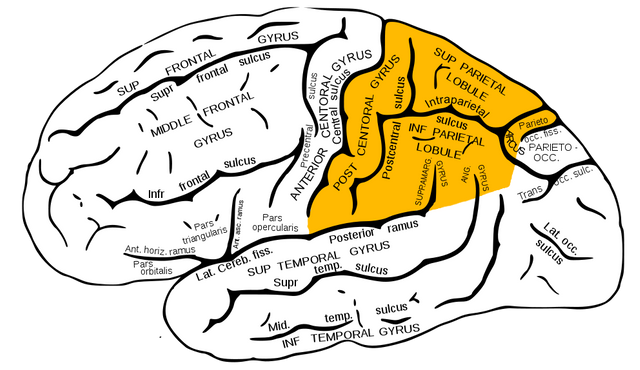Adventures in Cognitive Science 5: How the Brain simulates Actions
This post goes into a similar direction as my previous two about Mirror Neurons and the Common Coding Theory, the neural simulation theory basically says that covert actions (“actions”, which only exist as neural states in the brain) are in fact actions, but actions that are not executed. The theory predicts that a similarity (in terms of neural states) between an executed and a simulated action. This theory is presented in the paper “Neural Simulation of Action: A Unifying Mechanism for Motor Cognition”, which was published in 2001 by Marc Jeannerod, a French neurologist who focused on cognitive neuroscience and experimental psychology.
This paper introduces the term ”S-states” for mental states which have an action as content and brain activity can be shown to simulate that action, while observing it.
Simulated Actions
The general idea that those S-states and simulated actions correspond is not new, some of them are conscious, some of them are not, but both have the same relationship to actions on a behavioural and a neural level.
Imagined Actions
Behaviour studies have shown, that imagined actions have the same time characteristics as real actions, and similarly executed actions have the same time characteristics as covert actions. For example if a person is alternately tapping onto two targets “in his mind” then it follows Fitt's Law (a model which predicts the difficulty of alternately tapping onto two targets: the thinner the targets and more distant they are, the more difficult it is to alternately tap onto them), just like tapping onto real targets would. For non-conscious actions this phenomenon becomes even more obvious: the time to estimate whether grasping an object is successful is almost the same as actually grasping the object.
Action Observation
Other types of covert actions can be triggered by observing others doing an action. The same mechanisms are active on the brain when just observing an action or when doing that same action, I was already talking about mirror neurons earlier, Jeannerod does not explicitly mention them, but he cites an article about mirror neurons when describing this phenomenon.
Neurophysiological Validation of the Simulation Theory
Primary Motor Cortex
As fMRI studies have shown that in the primary motor cortex, a region of the brain that is responsible for planning and executing actions, the same areas are active when imagining an action and when actually performing it.

Source: Wikimedia Commons
Corticospinal Pathway
The corticospinal pathway is the region of the brain where information carrying nerve fibres (from motor neurons, those neurons which are responsible for movement) from the cerebral cortex (the brain region responsible for “higher” functions like memory, thought, language, consciousness, ...) pass to reach the brainstem or the spinal cord and therefore also involved in movement. If the motor cortex is active during S-states, then there should also be an increased activity in this region. Studies using transcranial magnetic stimulation have shown that this is the case.
Premotor Cortex
The premotor cortex lies in front of the motor cortex and, although its functionality is not fully understood, is thought to play a role in movement planning, sensory and spatial guidance of movement and understanding the actions of others (it is also the region where the most evidence for mirror neurons in humans was found). So it is also not surprising that a lot of studies found that this area is active when a person is in an S-state.
Parietal Cortex
The parietal cortex is different to the above mentioned areas of the brain, since it belongs to the associative cortical areas, which provide supporting brain functionality. Parietal areas behind and below to the primary parietal cortex are consistently activated during S-states. Areas in the inferior parietal lobule (an area involved in the interpretation of perceptions) and the intraparietal sulcus (an area involved among others in the visual control of reaching and pointing and control of grasping hand movements) is are activated during imagined grasping movements.

Source: Wikimedia Commons
Effects of Brain Lesion on S-States
Lesion studies are very common in neuroscience, because one way how to study the brain is by looking at what functions are not working, when certain areas are damages. The neural simulation theory predicts, that lesion affecting the motor system should also impair the expression of S-states, but leave their content intact. In patients with hemiplegia (weakness of one side of the body, caused e.g. by a stroke) were able to generate imagined movements of the affected limbs, but the mental performance was slower compared to the not affected hand, also patients with Parkinson's disease showed deficits in covert actions. A patient with a lesion in the parietal cortex was unable to mentally perform the earlier mentioned tapping task, but she was able to perform that task when it was normally executed. In general patients with lesions in the parietal cortex have difficulties performing tasks, which require a representation of an action, they can also not recognise pantomimed actions. This is linked to them not having a representation of an action.
Conclusion
The mechanism of cover action plays a role in all stages of action organisation, without the need of executing an action. So it represents a possible framework for motor cognition, because all aspects of action appear to be involved in S-states and because the activation of the motor cortex and all following pathways seem to fulfil several critical functions that indicate the conscious monitoring of S-states.
Since neuroscience is not particularly my field of expertise, this paper was really hard to read and understand (even though it's just seven pages long). I hope I worked out all the important points and even more I hope that I made no mistakes doing so. If you find any mistake or need some more clarification, feel free to ask me in the comments.